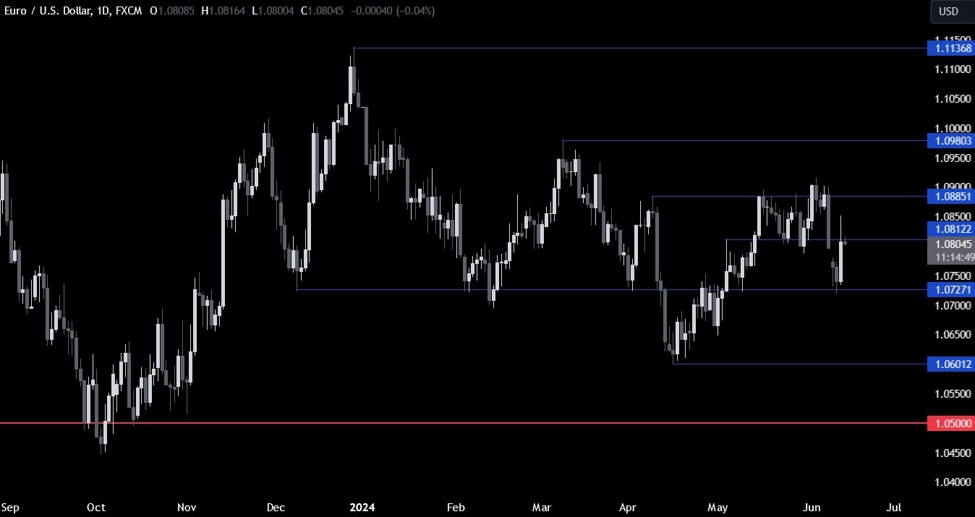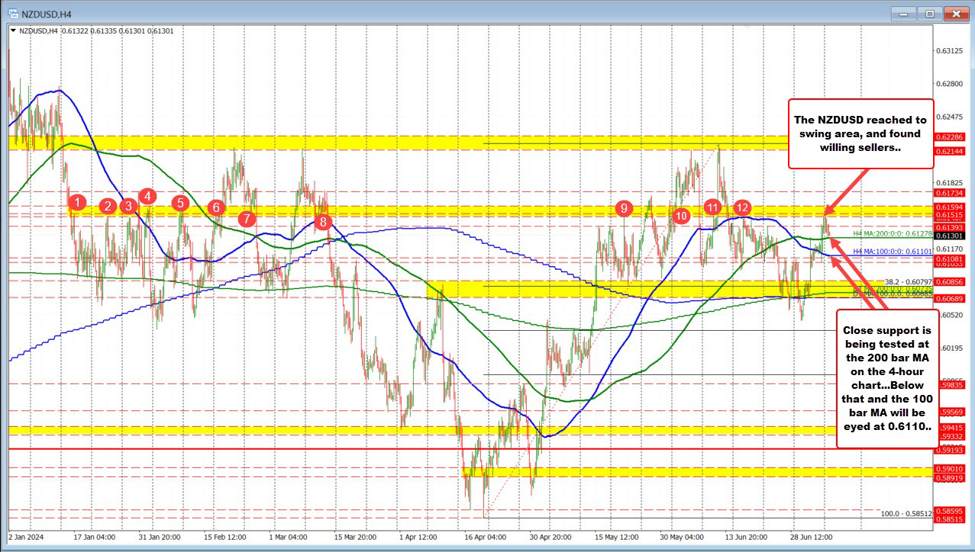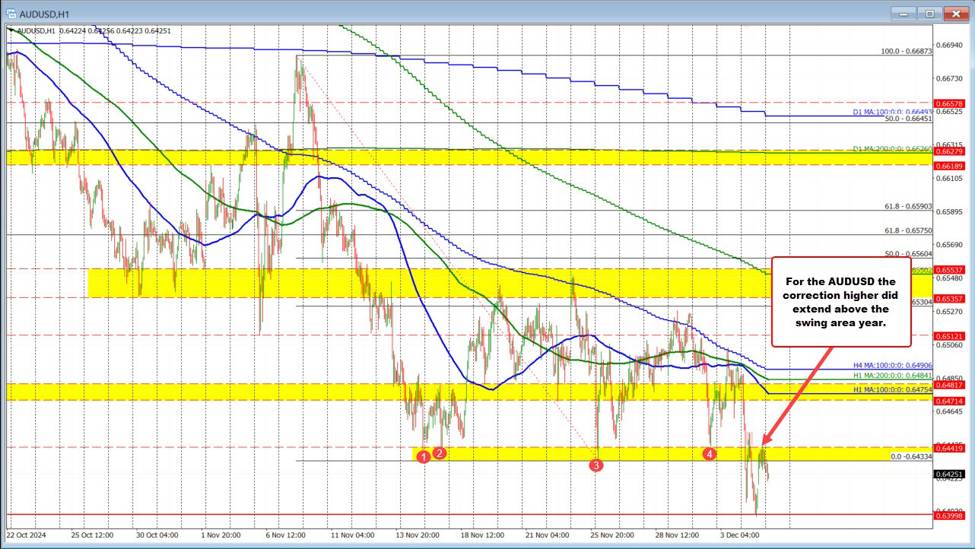The USD has moved higher after the stronger US employment cost data for the first quarter. That data point is one of the favored measures of employment inflation for the Fed. Of course the Fed starts its today meeting today which will end tomorrow with the rate announcement at 2 PM ET. Fed Chair Powell will address reporters at 2:30 PM ET. The odds on a breakout are now 50-50 for September. That has backed up from June not long ago (and remember when there was six cuts expected in 2024?).
The rise in the US dollar has the EURUSD moving down toward it 200-hour moving average 1.06874. It is also below its 100-day moving average at 1.07112. Staying below the 100-hour moving average and moving below the 200-hour moving average would increase the bearish bias going forward.
The USDJPY moved higher in the face of potential intervention. However fundamentally, the US federal bank tendency is working toward unchanged in 2024. Meanwhile, the BOJ does not seem to be in any hurry to raise rates. Technically, watch the 100 and 200-bar moving average on the 5- minute chart. You can find out why it is so important by watching the video above.
The GBPUSD moved lower to test it at a 100-hour moving average at 1.2506 (and the natural support 1.2500. THe price high in the European session stalled against its 200-day moving average of 1.25543. Those moving average extremes below and above define the trading range. It would now take a move outside of that range to either increase the bearish bias (below the hour moving average) or increase a bullish bias above the 200-day moving average going forward.
This article was written by Greg Michalowski at www.forexlive.com.
Source link




